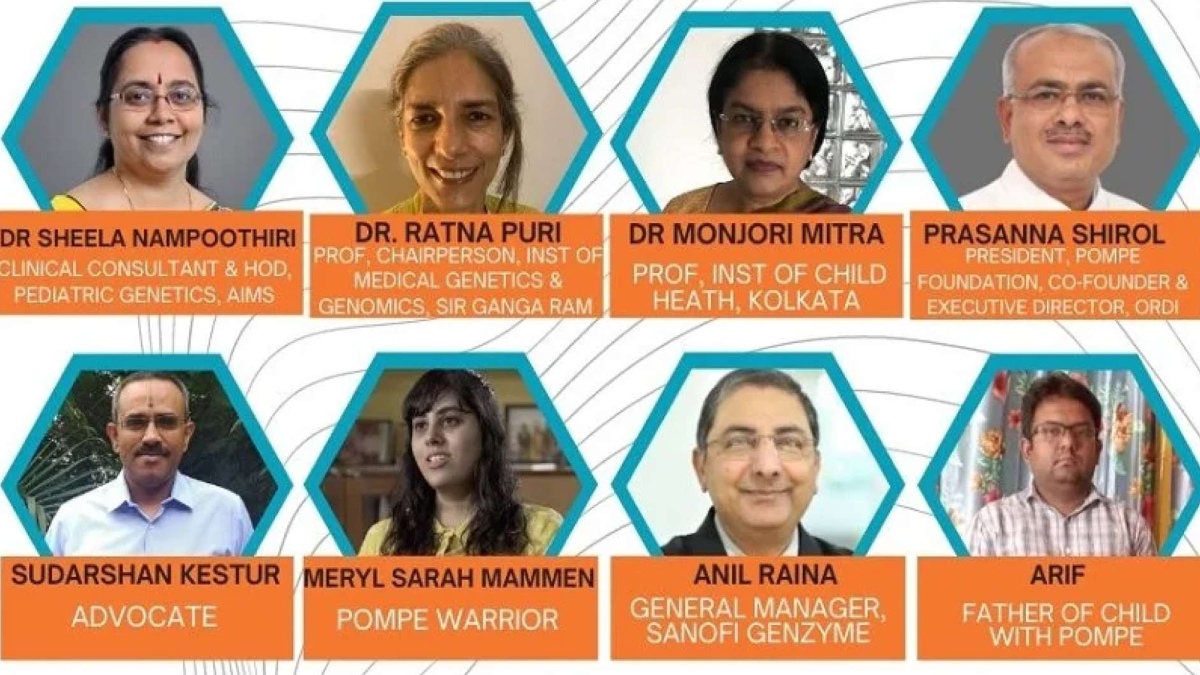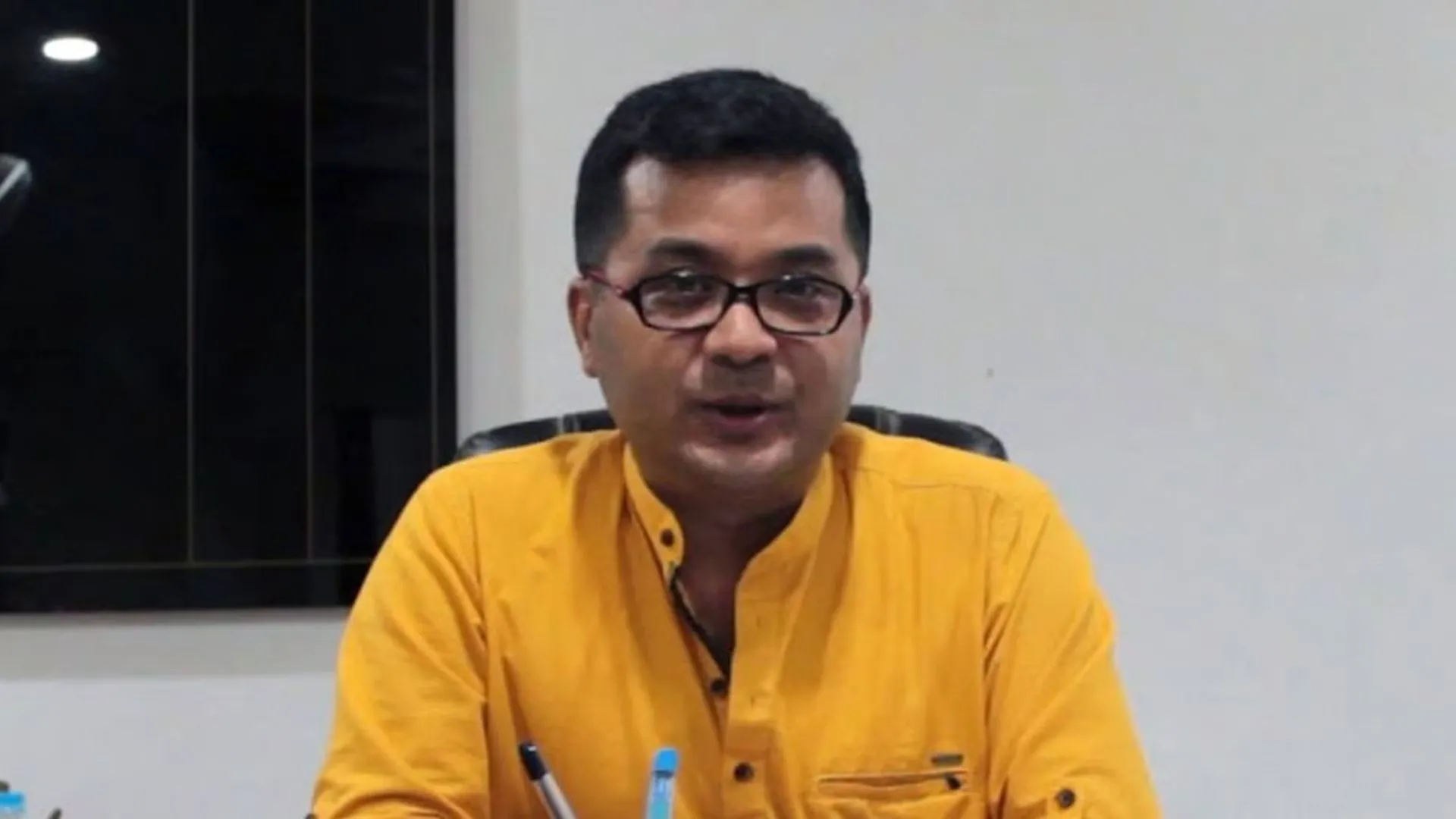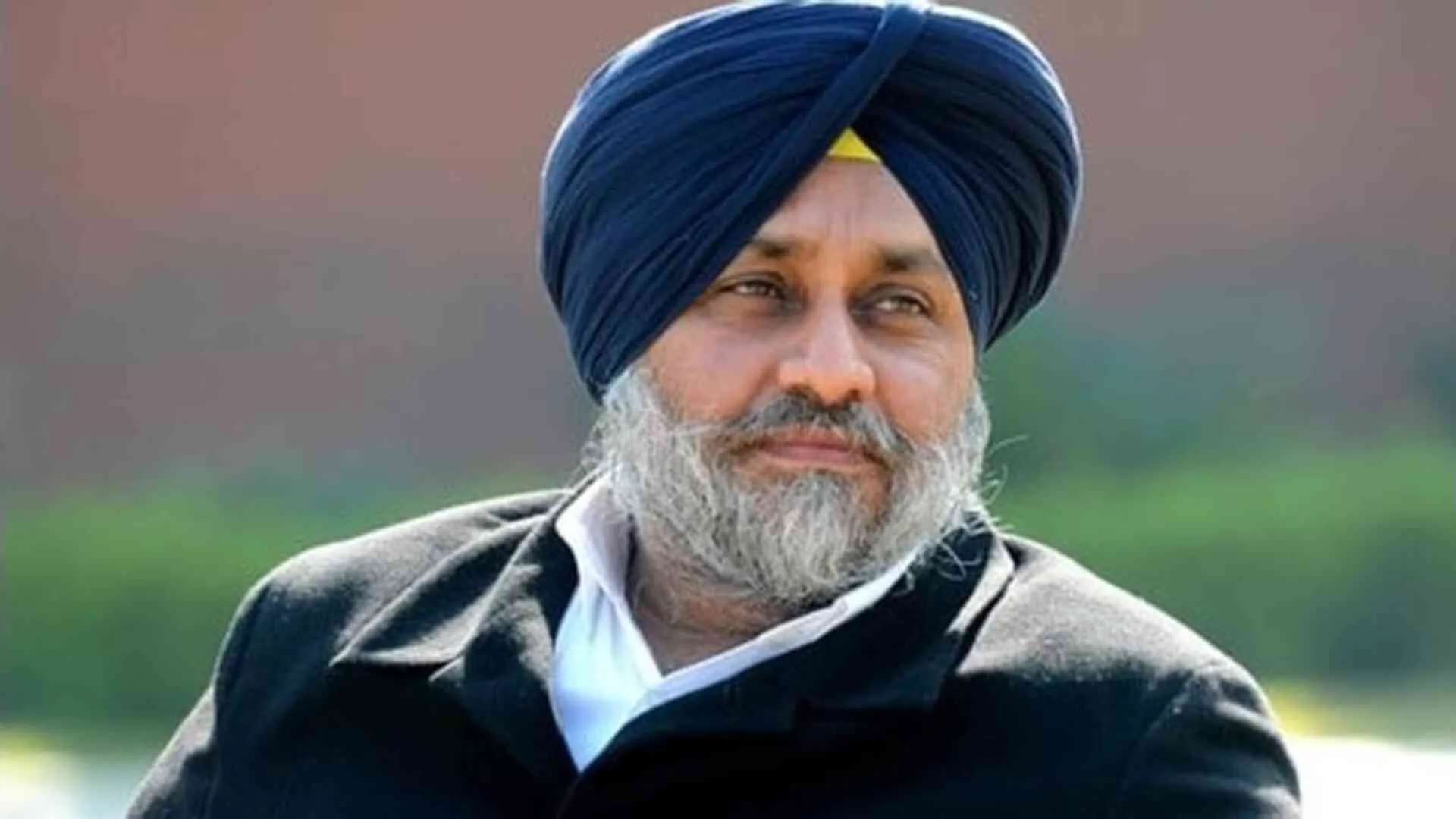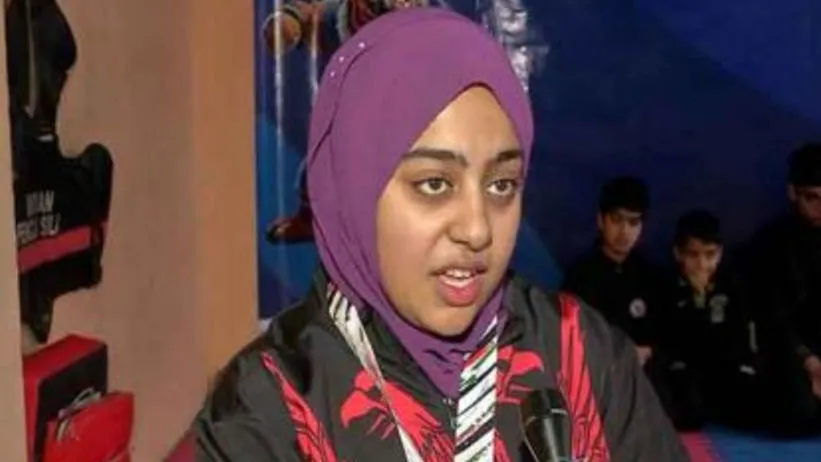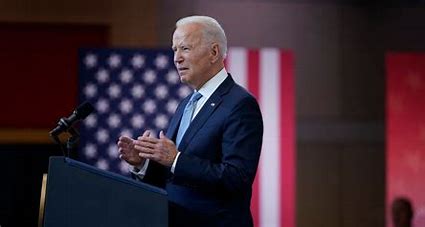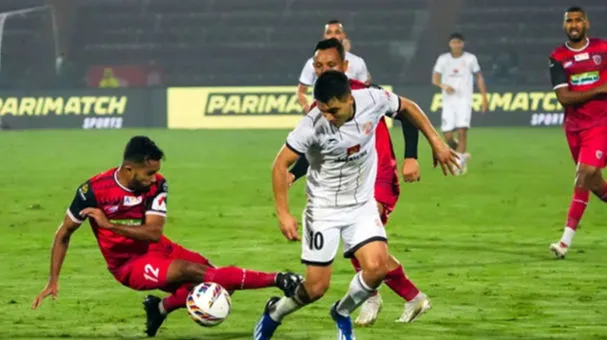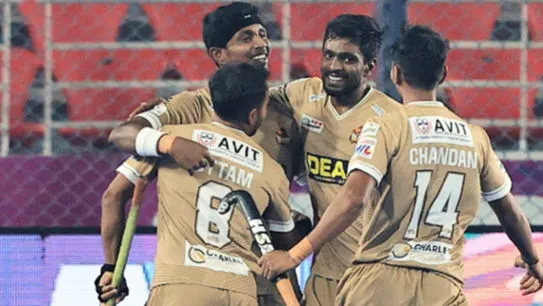The ‘Pompe: A rare disease’ session was joined by an expert panel who discussed various crucial aspects of the rare disease and how the Pompe community is yet to receive the right attention and care from the government. The panel included Dr Sheela Nampoothiri, clinical professor and the head of the department of pediatric genetics, Amrita Institute of Medical Sciences and Research Centre, Cochin; Prasanna Shirol, co-founder and executive director, Organisation for Rare Disease India; Dr Ratna Dua Puri, a professor and chairperson, Institute of Medical Genetics and Genomics, Sir Ganga Ram Hospital, New Delhi; Dr Monjori Mitra, professor, Institute of Child Health, Kolkata; Anil Raina, General Manager, Sanofi Genzyme; advocate Sudarshan Kestur; Meryl Sarah Mammen, a Pompe warrior; and Arif, the father of a child with Pompe.
Kickstarting the conversation Shirol said, “It’s crucial to raise awareness when it comes to rare and genetic disorders, especially in a country like India where we have a diverse population. When it comes to rare diseases, awareness is needed not only for the general public but also for the medical fraternity. The only treatment for Pompe, which is Myozyme is 15 years old. It’s been 15 years of care and treatment for this deadly chronic disease condition.”
As there is not much clarity about Pompe among the common public. Dr Nampoothiri explained its three varieties by stating, “Pompe is an extremely rare lysosomal storage disorder where there is an accumulation of the glycogen happening in the various parts of the body mainly gets accumulated in the cardiac muscle and also in the skeletal muscle and the patients will most probably be presented with hypertrophic cardiomyopathy that means the walls of the heart will be very much thickened. There are mainly three varieties of Pompe. The one which is manifesting in the first year of life is called infantile Pompe disease. These babies die by somewhere around 9 months to 1 year if they don’t the correct treatment. The treatment should be started as early as possible because if the irreversible damage has already happened, there is no point in giving treatment as the patients won’t be doing that well. The second variety is called juvenile Pompe disease where they do not have cardiac involvement but have mainly muscle involvement. They will be having difficulty getting there from the floor, and climbing stairs. The third variety is a late-onset Pompe or an adult form of Pompe where the patients will be somewhere very normal till around 16-17 years and they will be having difficulty in climbing stairs and getting up from the floor and there will also be lung involvement.”
Citing the problem of how to teach the parents about the rare diseases. Dr Mitra said, “It’s very difficult to transmit to the parents the telltale signs, the doctor also needs to know. Today, we do find that the awareness of the symptoms amongst the general paediatrician is also low. The parent might come and simply complain that their child is choking, is having little physical difficulty in feeding, where the child is otherwise quite healthy, but if a doctor has an awareness that there can be a possibility of competencies, it is the first diagnosis.”
Mammen spoke about her struggles with disease and described, “My journey of Pompe has been a series of misdiagnosis. My first symptoms were noted when I was in seventh grade when my dance teacher complained about me getting out with the difficulty compared to other children. At first, we didn’t know anything about this and then my parents heard that I was having difficulty climbing stairs. As years passed on, I completely lost most of my moments like climbing stairs, getting up from the ground. Eventually, by the age of 21, I couldn’t even walk, it was really difficult to walk without any kind of support. It was then under Dr Verma, we came to know about Pompe. Before that doctors diagnosed it as muscular dystrophy as it’s more common.”
Arif shared the Journey of his daughter and said, “Under the supervision of Dr Ajay Patil, who has expertise in genetics, guided me well through the Biogen treatment. His valuable suggestions on the usage of the drug helped me improve the health of the Madiha. Ever since she has started the drug, she has seen her heart improve. At 1 year 3 months, Madiha was on ventilator support for almost a week and was diagnosed with heart and mind. At 1 year and 4 months, she was on oxygen support for a month and diagnosed with Pompe disease. At 1 year and 5 months, Madiha received her first enzyme that is on 3rd August 2012. For 1.6 years she was oxygen-independent. At 2 years, Madiha started sitting and between 1 year and 6 months to 2 years and 4 months she was on a liquid diet. So around 2 years and 5 months, Madiha started eating solid food and at 3 years, she started speaking and going to school.”
Dr Puri highlighted the importance of early treatment and explained, “The basic physiology of the disease remains the same. It presents very early, more often the first year of life, there’s a lot of cardiac involvement, we don’t find that in patients of later onset of the disease. It’s slowly progressing but essentially, the concept of supportive care and definitive care remains the same. It is crucial to diagnose the patients early for both infantile and late-onset Pompe.”
Raina emphasised the company’s sense of duty and humanitarian efforts, “There are countries that offer treatment support to patients with such debilitating disorders. But there are others where the system is still evolving and just because the system is in a state of evolution, one cannot deny a person the right to treatment. A patient is a patient, irrespective of the geography of that patient. For example, when we started our humanitarian program, which was way back in 1991, this is actually, we are commemorating the 30 years of our humanitarian program. ”
Kestur talked about the legal aspects and said, “Our framers of the Constitution have given us some wonderful provisions. Most importantly, the High Court and the Supreme Court have very clearly held that the judgments in various stages of clearly held right to life are a part of the liberty that we have under Article 21. Now, having said that, the same principles have been consistently followed by our Karnataka High Court, because of consistent and persuasive orders passed by them, nearly about 45 to 46 children are being supported. So this is one of the actions, where the persistence and the consistent effort of the judiciary have to be now placed on record”.

